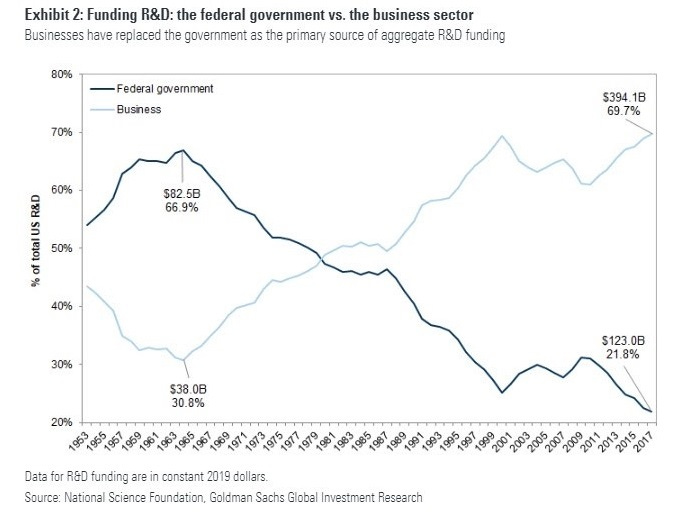🧪 The US should dramatically ramp-up R&D. And it might not.
Also: 5 Quick Questions for … Jason Crawford on the philosophy of progress
In This Issue
The Essay: The US should dramatically ramp-up R&D. And it might not.
5QQ: 5 Quick Questions for … Jason Crawford on the philosophy of progress
Micro Reads: re-embracing nuclear energy, creating true AI, regulation vs. clean energy, and more
Quote of the Issue
‘We must embrace the exuberance brought on by new technologies and renounce the ethic that too much growth is bad for us. Exuberance is not a character flaw; it is not something that has to be rooted out. Rather, it is the essential motive force for a technologically vibrant society.” - Michael Mandel, Rational Exuberance
The Essay
🧪 The US should dramatically ramp-up R&D. And it might not.
I would have guessed that the one piece of non-pandemic-related legislation to certainly pass during President Joe Biden’s first term would be something that greatly increased federal science and technology funding. Here’s why:
First, there’s a long-term macroeconomic reason for doing so. A US productivity growth downturn that started before the Global Financial Crisis dashed hopes that the IT revolution had permanently shaken the economy from its long-term stagnation — especially innovation-driven productivity growth. (Total factor productivity — the portion of economic growth that reflects advances in production technologies and processes — grew at a healthy 1¾ percent annually during 1996 through 2004 then petered out.) Advances in scientific discovery and innovation are key to pushing forward the technological frontier, sustaining long-term economic growth, and raising living standards.
Second, there’s been a big long-term decline in federal science investment as a share of the economy. Sure, business does a lot more R&D than it used to. It’s now some 70 percent of overall US research spending. But as a 2020 Goldman Sachs report rightly points out: “The majority of federal R&D funding is used to conduct research, including basic research that focuses on the advancement of knowledge, and applied research that focuses on solving specific practical problems. In contrast, R&D spending in the private sector tends to focus on the development of specific products and processes.” Think of what government does best as “curiosity research,” the technological ripples of which are unknowable.
Third, China. Just as the Cold War and Space Race helped drive federal R&D in the past, I figured that the rise of a powerful new geopolitical competitor, even threat, would create a strong bipartisan push to massively ramp-up funding. What’s more, China is an economic and technological power in a way the old Soviet Union never was. This from the National Security Commission on Artificial Intelligence: “For the first time since World War II, America’s technological predominance—the backbone of its economic and military power—is under threat. China possesses the might, talent, and ambition to surpass the United States as the world’s leader in AI in the next decade if current trends do not change.”
Keep reading with a 7-day free trial
Subscribe to Faster, Please! to keep reading this post and get 7 days of free access to the full post archives.




